The sad demise of 1953 Mediterranean Sky
Posted by Chris Graham on 23rd March 2023
Henry Brayshaw traces the history of a once famous ship from the 1950s, which ended its days as the Greek ferry Mediterranean Sky.
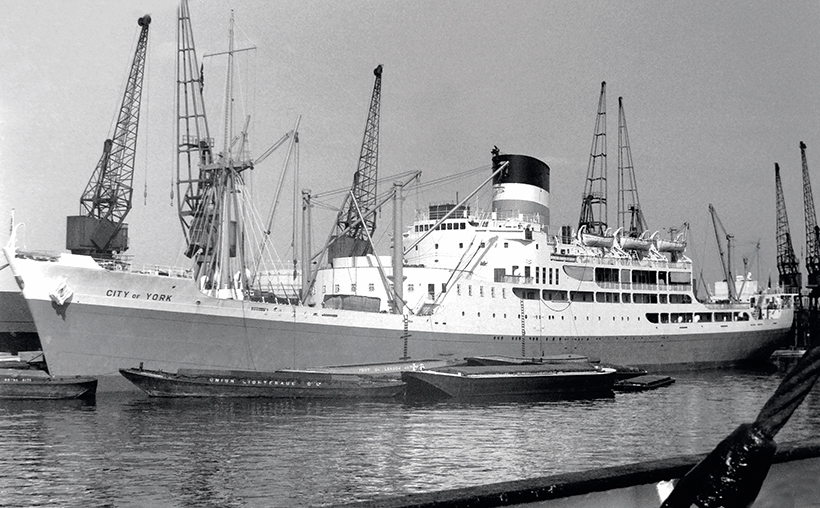
The combination passenger cargo liner City of York in London in the late 1960s. (Pic: Wolfgang Fricke)
Lying half-sunk and keeled over at the North Western end of the Gulf of Elefsina are the rusting remains of the Greek ferry Mediterranean Sky, once the passenger cargo liner City of York and part of the once-mighty Ellerman & Bucknall fleet.
The Gulf of Elefsina is a large, protected, deepwater basin west of Athens and has been used for the past 70 years as a major lay-up site for old ships from all over the world. Here Mediterranean Sky lies rusting, abandoned and half sunk, leaving no hint as to her unusual past and historic origins.
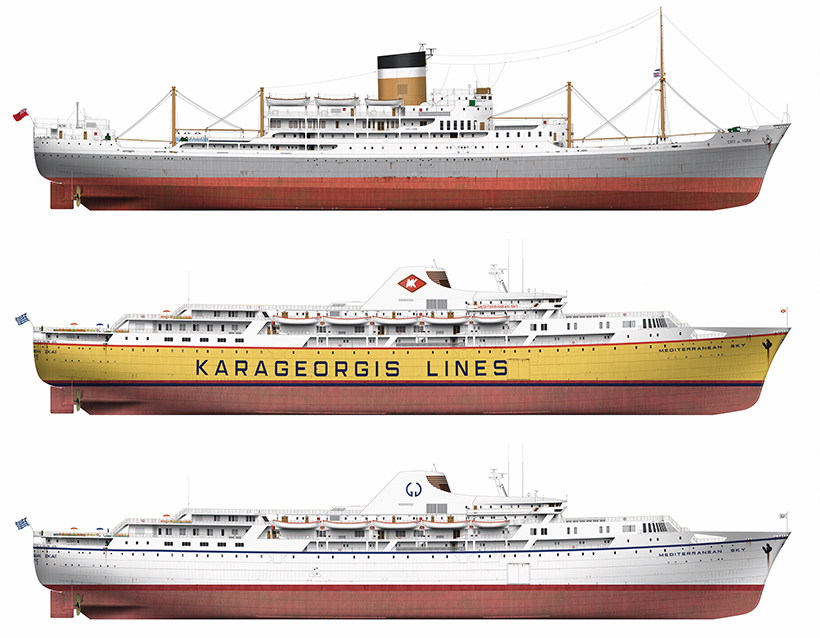
City of York and her two incarnations as Mediterranean Sky. (Digital art: Henry Brayshaw)
Mediterranean Sky was launched in March 1953 as City of York by Vickers Armstrongs at its Newcastle High Walker yard. She had been commissioned by Ellerman Lines as one of four combination passenger/cargo liners for the South African run; the other ships in the class were City of Port Elizabeth, City of Exeter and City of Durban.
At 541ft in length, the quartet were some of the largest and most luxurious combi-liners in the Ellerman fleet, boasting facilities not seen on other similar ships of the era, such as swimming pools, children’s play rooms (with their own deck space), and en-suite cabins on A deck, as well as a smoke room, restaurant and a Verandah Cafe. Each of the sisters had a capacity of 107 first class passengers in cabins located on A and B decks.
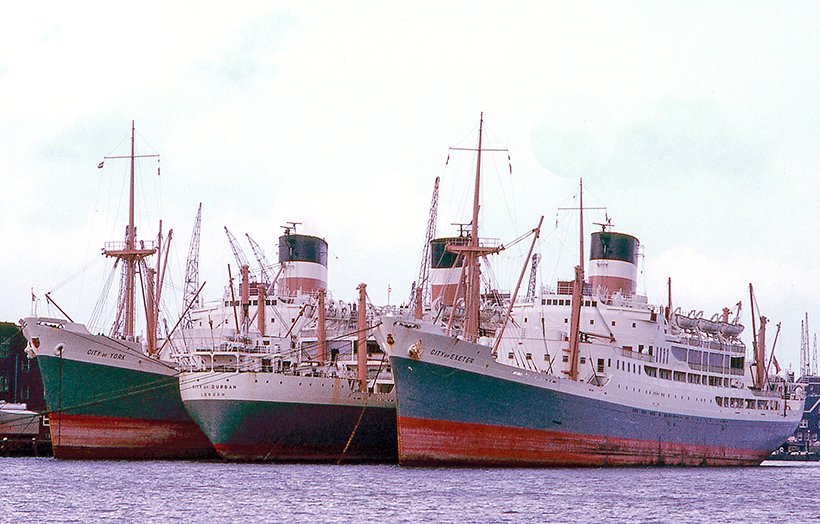
The Ellerman Quartet laid up at Amsterdam in 1971, prior to their sale to the Karageorgis Lines. (Pic: Jan van Dijk)
City of York had five cargo holds, three forward and two aft, with the accommodation amidships, and approximately 607,000ft3 of cargo space. Power came from twin Doxford marine diesel engines producing 12,650hp, driving twin four-bladed screws to give a speed of 17 knots, which enabled the ships to complete their intended route in about 16 days.
The four ships sailed a route from London to Las Palmas, Cape Town, Port Elizabeth, East London, Durban, Lourenço Marques (now Maputo) and Beira service for 18 years. On the return voyage they also called at several ports in the UK, Germany, Belgium and the Netherlands to load additional cargos, and occasionally offered mini-cruises. In 1967 all four vessels were refitted, which involved their passenger accommodation being updated and renewed.
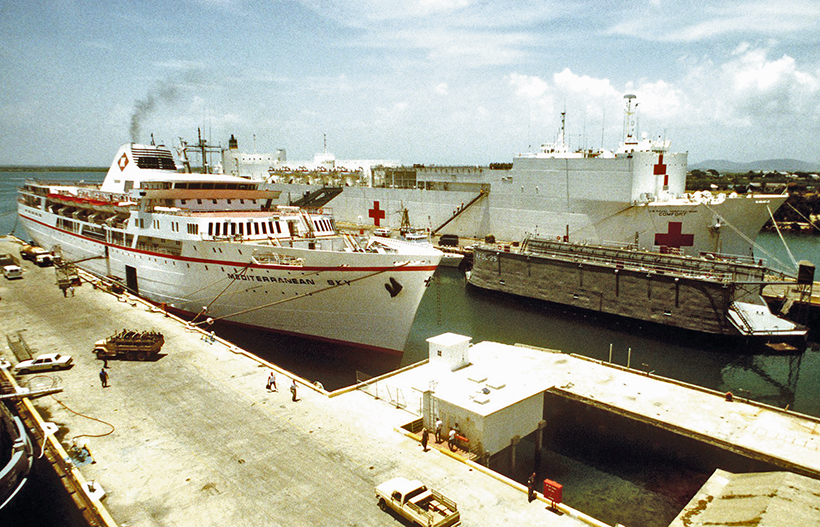
Mediterranean Sky in Cuba, serving as an accommodation ship for the US military in 1994, along with the hospital ship. Comfort.
Sale to Greece
In the late 1960s and early 1970s, as air travel began to overshadow the maritime passenger trade, the Ellerman Lines put many of their passenger ships up for sale, including the four sisters. They were acquired by Michail A Karageorgis, a Greek ship owner with a large fleet of cargo vessels who had recently begun to dabble in the passenger trade headed by his son Aristomenis.
In the post-war years and prior to the oil crisis, Greece experienced a shipping boom, with companies springing up almost yearly and buying up older second-hand tonnage from around the world, converting the ships into ferries or cruise ships. Many of these companies ended up dominating the cruise industry in the Mediterranean, such as the Typaldos Lines or the Chandris Group.

Mediterranean Sky during her renovation in Perama, in 1986.
Karageorgis planned to rebuild all four ships into luxurious modern passenger vessels, and they left Southampton in late 1971 bound for Piraeus, where they would be converted. Supervising the rebuilds was famed yacht designer John Bannenberg, who more notably had helped design some of QE2’s interiors.
City of Exeter was renamed Mediterranean Sea and became the first ship of the quartet to be rebuilt, with of York, renamed Mediterranean Sky, following soon after. The ships were moored together at the shipyards of Perama, and had their interiors gutted and rebuilt, and their superstructures extended fore and aft. Cargo spaces were converted into car decks, with a side-loading door cut out of the port sides enabling vehicles to drive on and off.
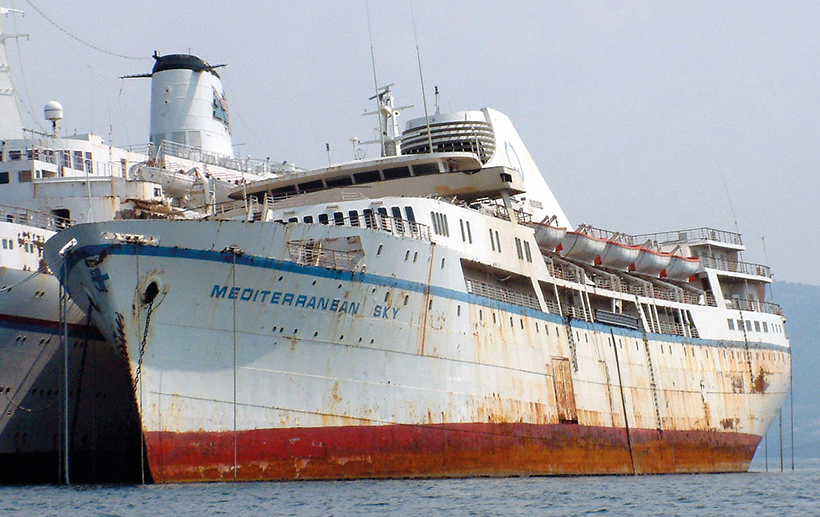
Laid up and forgotten, Mediterranean Sky slowly rusts away at anchor in the Gulf of Elefsina, in late 2002.
Both ships could carry about 300 cars (or 200 private cars and 60 lorries). Their passenger capacities were increased to 800 and each cabin was fitted with private facilities, with the Deluxe cabins having televisions, radios and telephones.
Mediterranean Sky had three outdoor pools located on her aft decks, whereas Mediterranean Sea had two, one forward of her bridge and one on her aft deck. All of their machinery was left unchanged. But the outcome of all this work meant that both vessels emerged from the shipyard almost unrecognisable from their original specification, with little remaining from their days as Ellerman Liners. Their new streamlined superstructures gave them an ultra-modern look, quite unique in Greece at the time.

Mediterranean Sea, formerly City of Exeter, went to the breakers at Aliaga in 1998. (Pic: Selim San)
The increased tonnage and added superstructure made them somewhat unstable and top-heavy, something which plagued them for the rest of their service lives. Less than two years after her rebuilding, Mediterranean Sea was modified again to try and mitigate the stability issues, with her boat deck dropped one deck lower, while some of her upper works were removed.
The two remaining ships of the quartet, City of Durban and City of Port Elizabeth, were to be rebuilt into luxury cruise ships. However, rising costs and the oil crisis resulted in both vessels remaining idle, and plans to rebuild them fell through, and City of Durban, renamed Mediterranean Dolphin, was scrapped at Kaohsiung, Taiwan in 1974.
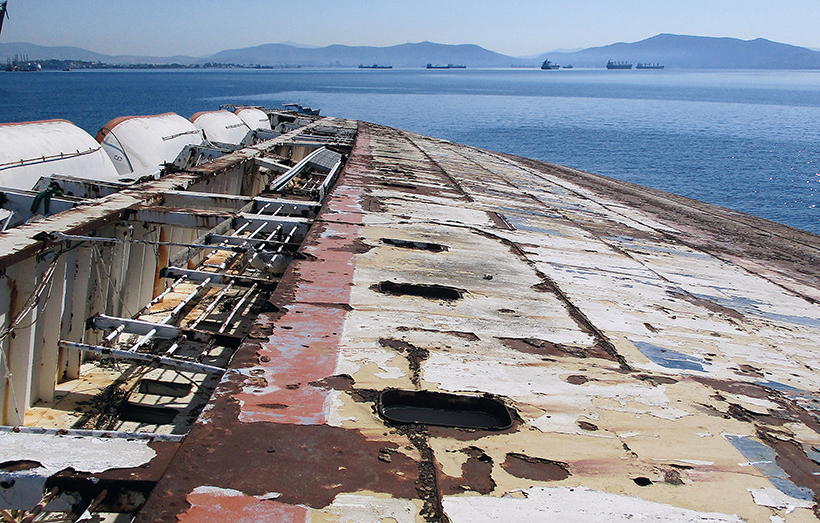
The large dark blue letters of Karageorgis Lines still visible on the ship’s hull despite the years of neglect in the Gulf of Elefsina.
City of Port Elizabeth, renamed Mediterranean Island and later Mediterranean Sun, was used as a donor ship, occasionally providing engine spares and other equipment to the active Mediterranean Sea and Mediterranean Sky. She was initially moored at Kalamata for a few years and then back to Piraeus. She was scrapped at Kaohsiung in 1980.
Greek ferry work
Both Mediterranean Sky and her sister were placed on the Ancona to Patras route, but also undertook occasional cruises around the Aegean. Over time the ships developed quite a following, becoming well-known ferries in Greece, especially in Patras, where they would call regularly, with their unique futuristic appearance and striking yellow hulls making them stand out among the thousands of vessels plying the Greek waters.
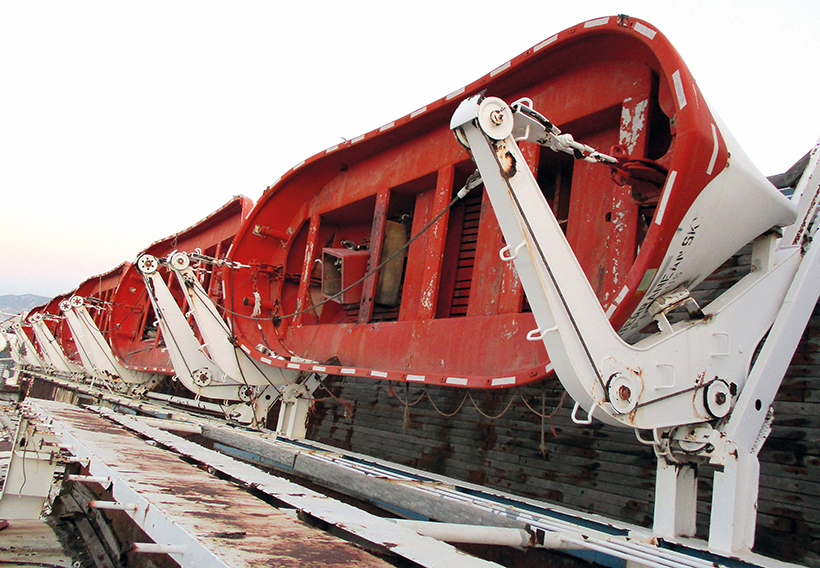
Lifeboats still ‘hang’ from their davits on the ship’s side.
As with many older ships, however, operating costs were high, and as the 1970s drew to a close, Greece was heading for a shipping recession. Shipping companies were going under, leaving thousands of laid-up and inactive ships lining the coasts around the ports and bays of Greece. By the mid-1980s both Mediterranean Sky and Mediterranean Sea were laid up at Elefsina, among many other classic passenger vessels.
This was not the end for the two ferries, however, and they enjoyed brief periods of activity over the next few years. Mediterranean Sea was chartered to Westminster Hotels and used as an accommodation ship in Luanda, Angola. When the political situation of Angola destabilised in the early 1990s, she was sent back to Greece.

The remains of one of the spacious, Special De Luxe cabins.
Mediterranean Sky was chartered to various organisations in the late 1980s and early 1990s, most notably the British and US military. She was used as an accommodation ship during the troubles in Somalia and, when the US eventually pulled out of the country in 1993, helped ferry US troops from Mogadishu to Mombasa, the first leg of their journey back to the States. Later, in 1994, she was sent to Guantanamo Bay and housed US troops during the Haitian migrant crisis.
By early 1995 she had returned to Greece and was laid up alongside her sister at Elefsina, with both of their futures uncertain. That same year Karageorgis, the man who had given the ships a new lease of life, passed away at the age of 96. It was also the end for the Karageorgis Lines, as they ceased operating, and both vessels were put up for sale.

Looking directly up into a De Luxe two-berth outside cabin.
Mediterranean Sea was sold to Istanbul Sea Lines SA and renamed Tutku. However, it appears that she never actually sailed under this name, remaining laid up at Chalkida before being scrapped at Aliaga in 1998.
Mediterranean Sky was bought by Golden Cruisers and made a couple of trips to Italy, but this ultimately came to nothing. In 1996 she was arrested at Patras for unpaid port fees and remained there until 1999, when she was towed back to Elefsina and laid up in a cluster alongside Regent Star (ex-Statendam) and Chandris Lines’ cruise ship Amerikanis (formerly Union Castle’s Kenya Castle). Ironically, Union-Castle Line had been one of the Ellerman Lines’ main competitors back in the mid 20th century.
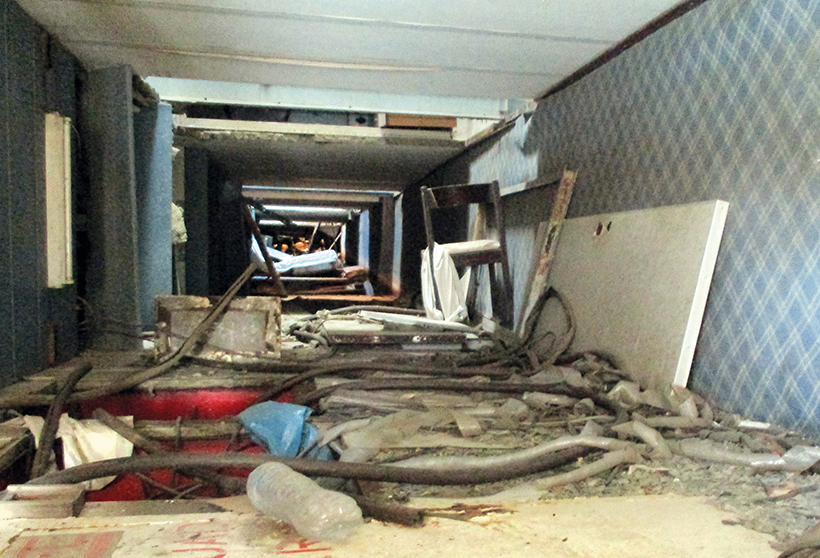
A corridor, keeled over, with cabins above and below.
Effectively abandoned at her moorings, the ship developed a leak in autumn 2002 and gradually listed to starboard. This list increased over the following months and the derelict hull was in danger of sinking. The hulk was towed to the nearby shipyards at the north-western end of the gulf with the intention that it would be beached.
However, the vessel capsized onto her starboard side and settled in about 10m of water, less than 100 yards from the shore. The wreck was considered a total loss and abandoned to the elements. Nearly 20 years later, the graffiti-covered and rust-stained hulk remains there, slowly rotting away under the hot Greek sun.

Debris on the promenade deck.
The wreck today
The wreck lies completely heeled over on its starboard side, at an angle of about 85 degrees. Most of what remains of the ship is in somewhat decent shape, owing to the calm and protected waters of the bay. Almost immediately after the ship sank, the interiors were ransacked, although the extreme angle made it difficult for looters to reach many of the spaces.
Amazingly, even 20 years later and with the vessel in such a poor state, lifeboats still hang from their davits, some cabins still have mattresses and bedding in place, carpets still adorn the floors, cabin keys are still hung up, and life jackets are still stashed in lockers. Even though most of the ship was completely rebuilt, certain details from her days as City of York remain. Her riveted hull and prominent sheer shows her age as a classic, in stark contrast to her futuristic-looking superstructure added later.
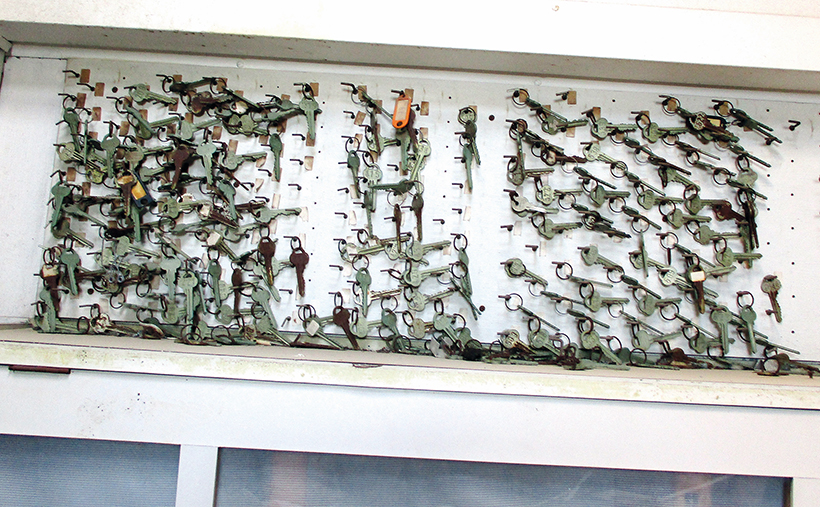
Cabin keys are still hanging up.
It is still uncertain what will happen to the wreck. Although there have been numerous plans to remove many of the derelict ships that litter the area, little has been done, mostly due to the high cost of removal. It seems that for the foreseeable future she will remain where she is, a relic from a previous era, one of the only remaining ships from the once-mighty Ellerman fleet, and one of the last remaining examples of the famous Greek rebuilds of the time.

The bridge, with a few of the original controls still in place.
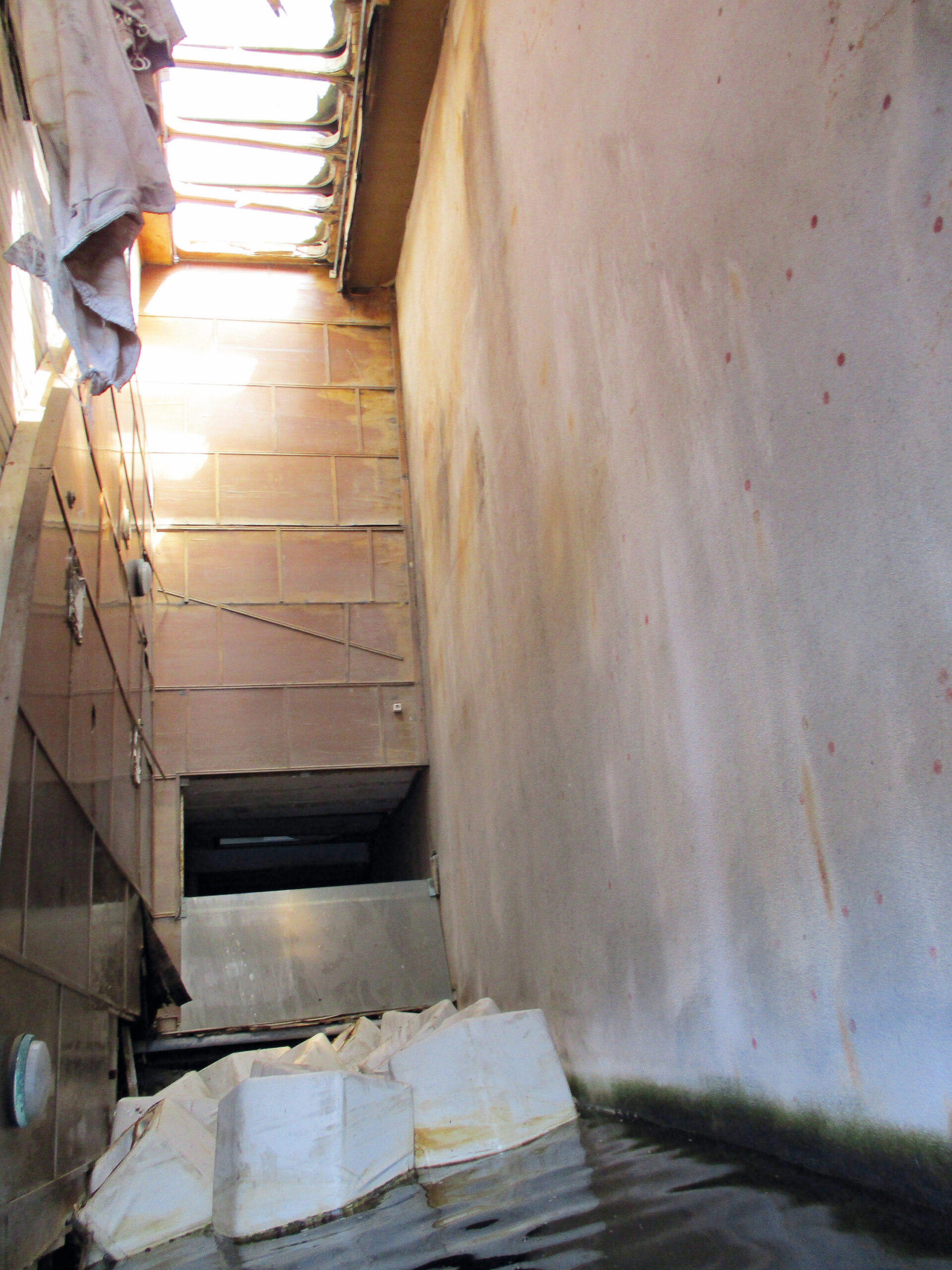
The De Luxe lounge, with chairs piled up and floating.
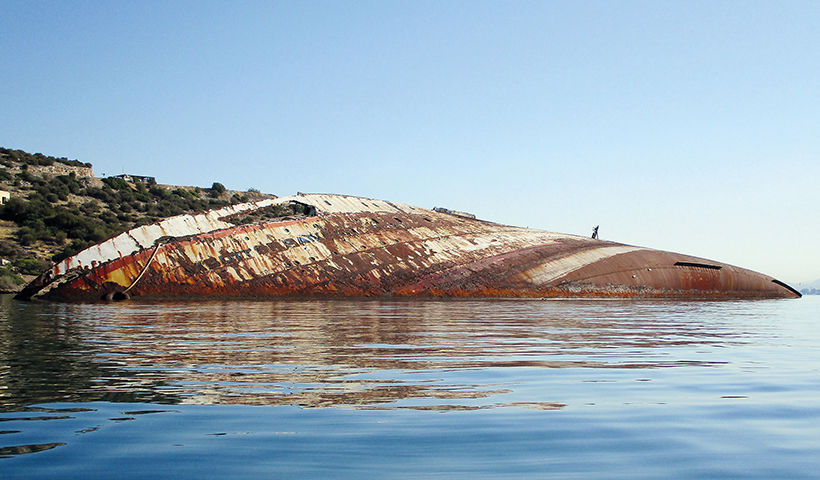
The wreck of Mediterranean Sky is gradually deteriorating.
This feature comes from the latest issue of Ships Monthly, and you can get a money-saving subscription to this magazine simply by clicking HERE

Previous Post
Superb 1939 ex-army Scammell Pioneer
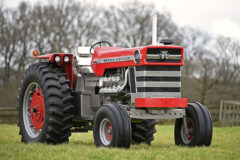
Next Post
1972 Massey Ferguson 1150 beautifully restored



